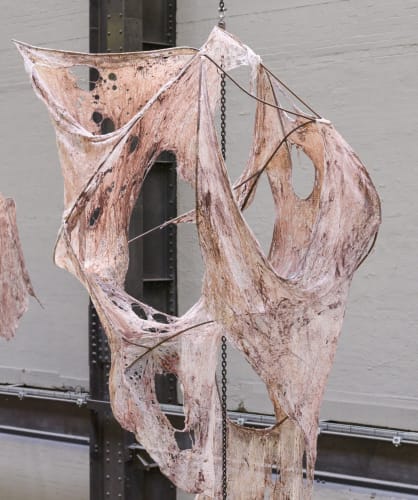At a recent luncheon for the Delfina Foundation in London, a week before Frieze madness began, two artists with Asian roots reunited. One was Moe Satt, the artist from Myanmar who just opened a solo exhibition at the foundation. The other was Pio Abad, the London-based, Manila-born artist nominated for the 2024 Turner Prize, whose annual show of finalists just opened at Tate Britain. They have known each other for over a decade, but when they first met, they never could have imagined that they would one day be exhibiting in the British capital at the same time.
Abad, who has lived in the U.K. for two decades, told me that he feels that the visibility of Asian artists has gradually improved in the country, for both locally based diasporic artists with Asian roots and artists coming from Asia. As if to prove his point, there is an unprecedentedly strong presence of Asian artists in London this Frieze Week.
The third edition of Frieze Seoul concluded a month ago, and the presence of Korean artists in the U.K. capital this week is especially notable. Today, the Hayward Gallery is inaugurating Haegue Yang’s first U.K. institutional solo show, “Leap Year,” curated by Yung Ma. Its opening goes head-to-head with that of Mire Lee, who is unveiling her new work in Tate Modern’s Turbine Hall for its Hyundai Commission. At the same time, artist and choreographer Geumhyung Jeong is performing at the ICA as part of her solo exhibition “Under Construction.” (Jeong will also perform on October 9 and in November). Paintings, sculptures, and video works by Heemin Chung are featured in “UMBRA,” her first solo with Thaddaeus Ropac. And the up-and-coming Seoul gallery Cylinder is showing Eunsil Lee’s paintings in a solo exhibition called “Treachery Skin” at No. 9 Cork Street. All of these events are backed by public and private funding from South Korea.
The major presence of Asian artists in London is a continuation of what we have seen in Venice, which we covered earlier this year. Will these artists earn a strong following in the West, as their Western counterparts have in Asia? Will this become a sustainable trend and reshape the discourse around Asian contemporary art in the West? The Asia Pivot has learned that more industry players are looking at this space, with more new initiatives to come in 2025. Stay tuned.
—Vivienne Chow


